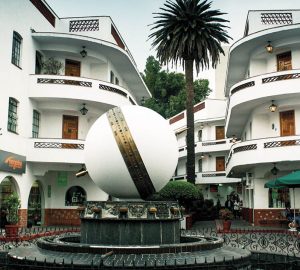Every culture throughout the millennia has created their own beliefs about what happens when we leave this world. To go with this belief system they have developed different styles of furnishing cemeteries and the dead’s resting places, resulting in marvelous examples of funerary art adorning tombs, graves and mausoleums.
During the 19th century, San Luis Potosí had an especially refined cultural environment that influenced many aspects of the decorative arts, with funerary art not being an exception.
In 1889, at the height of Porfirio Diaz’ government, the Panteón El Saucito was opened to the public. Nowadays, it still is the oldest cemetery in functions in San Luis, but more importantly, is was the first “civil” cemetery in the city, meaning it could be used by anyone, regardless of nationality, religion or social background, which as Historian Adriana Corral, from El Colegio de San Luis, states “is a reflection of the plurality found in the Potosino society at the time”.
El Saucito is modeled after Père- Lachaise, the famous French cemetery, which innovated in aspects from the distribution of streets and avenues to hygiene and biological hazard prevention to the idea of the cemetery being accessible for any one: tombs where divided in six classes, depending on how much the deceased’s family could afford to pay.
Funerary art at El Saucito is a great example of late 19th century to early 20th century decorative arts in Mexico and San Luis Potosí.
Brownstone and limestone mausoleums topped with marble sculptures surround the main avenues of El Saucito: the first class part of the cemetery was used by the wealthiest families in San Luis Potosí to leave a mark even after the death of their loved ones. French, Italian and other European sculptors where hired and brought to Mexico to work exclusively on the many decorations one can see on these tombs and mausoleums.
Iron and bronze, though not as common as marble, are also present within El Saucito: gates with fine details securing the mausoleums and crosses and decorated vanes can be seen at their rooftops.
El Saucito is an example of the evolution of San Luis Potosí, especially the city’s first efforts in becoming a cosmopolitan center by following the models cities in Europe where developing, and today, it’s still open to the public.
Throughout the year, night time tours to the cemetery are organized, sometimes featuring shows about Potosino an Mexican legends and myths during November. Be sure to look on Facebook for info about these tours and get to know a part of the city that won’t typically appear on tourist guides.
Article written by:
Octavio Guerrero
Literature & Spanish-American Languages Specialist
E-mail: oc_15@hotmail.com






